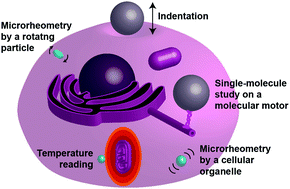Optical trapping for biosensing: materials and applications
Abstract
Since the 70's, when Arthur Ashkin and coworkers demonstrated that optical forces could displace and levitate microsized particles, optical trapping has seen a steady stream of developments and applications, particularly in the biological field. Since that demonstration, optical trapping has been especially exploited as a powerful tool for non-invasive sensitive measurements. The recent development of synthesis routes has further expanded the possibilities of optical trapping in the area of biosensing where new multifunctional particles are used as a single probe. The synergy between the development of new materials and experimental techniques has led to the appearance of numerous studies in which novel biosensing applications are demonstrated. The design of new materials and optical systems to face new challenges makes it necessary to have a clear idea about the latest developments achieved in the field. In this work, we summarize recent experimental advances in biosensing achieved by optical manipulation of micro- and nanoparticles providing a critical review on the state of the art and future prospects.

- This article is part of the themed collection: Recent Review Articles


 Please wait while we load your content...
Please wait while we load your content...